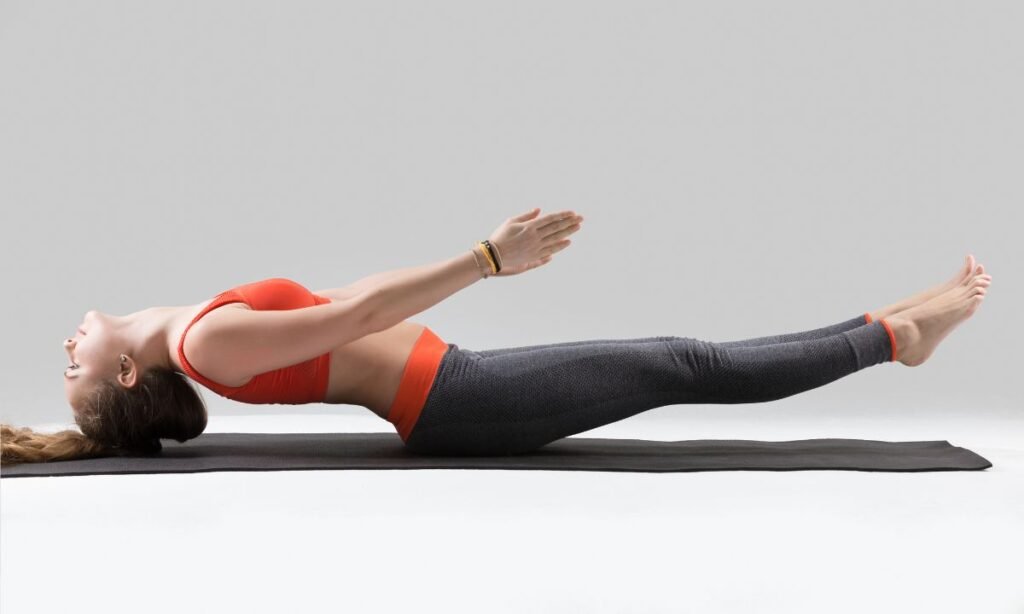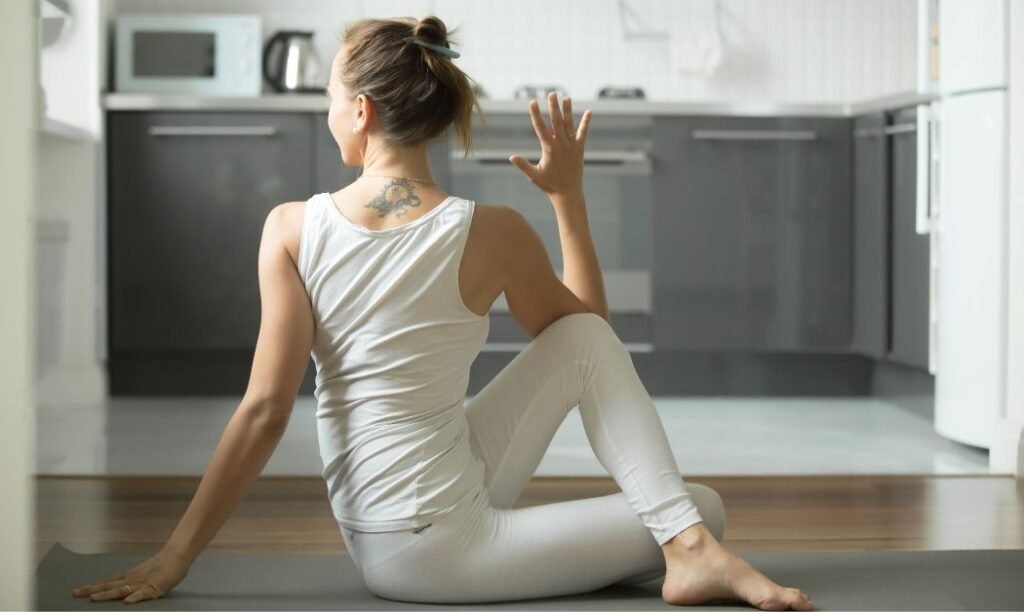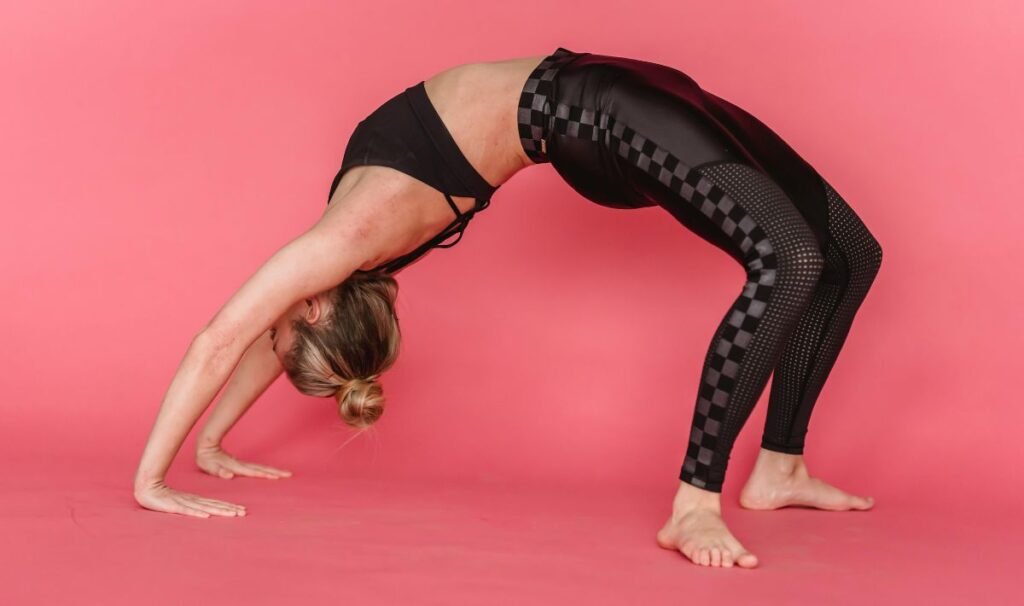Yoga is a journey that strengthens the body, calms the mind, and nourishes the soul. Among the many poses that yoga offers, the Low Boat Pose, or Ardha Navasana, is a core-focused gem that challenges your strength, balance, and focus. In this blog post, we will explore everything you need to know about this pose, including its benefits, step-by-step instructions, common mistakes, modifications, and more. By the end of this guide, you’ll be ready to master the Low Boat Pose with confidence and ease.
What Is Low Boat Pose?
Low Boat Pose, or Ardha Navasana, is a seated yoga posture that engages the core muscles while improving balance and stability. The pose is part of the “boat family” in yoga, with the High Boat Pose (Navasana) being its close sibling. While High Boat Pose involves keeping the body in a V-shape, Low Boat Pose requires you to lower your torso and legs closer to the ground, making it a more intense challenge for your abdominal muscles.
This pose is perfect for anyone looking to:
- Strengthen their core muscles.
- Improve posture and spinal alignment.
- Build mental focus and determination.
Why Should You Practice Low Boat Pose?
Low Boat Pose offers a range of benefits for your body and mind. Here are some reasons to add it to your yoga practice:
1. Builds Core Strength
The pose activates your rectus abdominis (the six-pack muscles), transverse abdominis (deep core muscles), and obliques. A strong core improves overall stability and supports your spine in daily activities.
2. Improves Posture
By strengthening the muscles around your spine and abdomen, Low Boat Pose helps you sit and stand taller, reducing slouching and back pain.
3. Enhances Balance and Stability
Holding your body in a controlled position during this pose requires focus and balance. Over time, this improves your overall stability on and off the mat.
4. Boosts Mental Focus
Staying steady in Low Boat Pose isn’t just a physical challenge; it’s a mental one too. Concentrating on your breath and alignment trains your mind to stay present and calm under pressure.
5. Tones the Lower Body
Although it’s a core-centric pose, Low Boat also engages your hip flexors, thighs, and lower back, giving your lower body a gentle workout.
Step-by-Step Guide to Low Boat Pose
Ready to dive in? Here’s a step-by-step guide to performing Low Boat Pose safely and effectively:
Step 1: Start in a Comfortable Seat
- Sit on your yoga mat with your legs extended straight in front of you.
- Place your hands on the floor beside your hips for support.
Step 2: Transition to High Boat Pose
- Bend your knees and lift your feet off the ground, bringing your shins parallel to the mat.
- Lean back slightly while keeping your spine straight. Engage your core to maintain balance.
Step 3: Lower to Low Boat Pose
- Slowly lower your torso and legs closer to the ground while keeping them lifted.
- Your body should form a shallow V-shape, with your shoulders and feet hovering a few inches off the mat.
- Extend your arms forward, parallel to the ground, for balance.
Step 4: Hold the Pose
- Engage your core muscles to keep your body steady.
- Focus on your breath: inhale deeply and exhale fully.
- Hold the pose for 5-10 breaths, or as long as you can maintain proper form.
Step 5: Release
- To exit the pose, gently lower your body to the mat or return to High Boat Pose before releasing.
Mistakes to Avoid
Like any yoga pose, Low Boat Pose comes with its challenges. Here are some common mistakes to watch out for:
1. Arching the Lower Back
An arched back puts unnecessary strain on your spine. Instead, focus on engaging your core and pressing your lower back toward the mat.
2. Holding Your Breath
It’s easy to forget to breathe when you’re concentrating. Remember to inhale and exhale steadily to keep your body relaxed and oxygenated.
3. Letting the Shoulders Tense Up
Keep your shoulders relaxed and away from your ears to avoid tension in your neck and upper back.
4. Dropping the Legs Too Low
If your legs drop too close to the ground, you may lose the core engagement. Keep them at a height where you can feel your abs working without straining.
Modifications and Variations
Low Boat Pose can be tailored to suit your fitness level. Here are some modifications and variations to try:
Modifications
- Knees Bent: Keep your knees bent instead of straightening your legs to reduce the intensity.
- Hands Behind Back: Place your hands on the mat behind your hips for extra support and balance.
- Use a Yoga Strap: Loop a yoga strap around your feet and hold the ends to help stabilize your legs.
Variations
- High-to-Low Boat Flow: Transition between High Boat Pose and Low Boat Pose to build strength and endurance.
- One-Legged Low Boat: Extend one leg at a time while keeping the other knee bent for a gentler challenge.
- Weighted Low Boat: Hold a lightweight or medicine ball in your hands to increase resistance.
Tips for Success
Here are some tips to help you master Low Boat Pose:
- Warm Up First: Perform a few rounds of Sun Salutations or gentle stretches to prepare your body.
- Engage Your Core: Focus on drawing your belly button toward your spine to activate your core muscles.
- Maintain a Neutral Spine: Avoid rounding your back or tilting your pelvis excessively.
- Start Small: Hold the pose for shorter durations at first and gradually increase your endurance.
- Use Props: Don’t hesitate to use props like yoga blocks or straps if needed.
Incorporating Low Boat Pose Into Your Routine
Low Boat Pose can be practiced on its own or as part of a yoga sequence. Here are some ideas:
Core-Strengthening Flow
- Plank Pose
- High Boat Pose
- Low Boat Pose
- Side Plank (each side)
- Child’s Pose
Morning Energizer
- Cat-Cow Pose
- Downward Dog
- High Boat Pose
- Low Boat Pose
- Seated Forward Bend
FAQs About Low Boat Pose
Q: Is Low Boat Pose suitable for beginners?
A: Yes, but beginners may want to start with modifications, such as bending the knees or using a strap for support.
Q: How often should I practice Low Boat Pose?
A: You can practice it 3-4 times a week, depending on your fitness level and goals.
Q: What should I do if I feel strain in my neck?
A: Keep your head aligned with your spine and gaze toward your toes. If needed, place your hands behind your head for support.
Final Thoughts
Low Boat Pose is a powerful addition to any yoga practice. While it may feel challenging at first, consistent practice will help you build strength, stability, and confidence. Remember to listen to your body, modify as needed, and focus on proper alignment. With time and dedication, you’ll be sailing through Low Boat Pose like a pro!
So, roll out your mat and give it a try. Your core will thank you!

Sonu is a passionate yoga teacher with over 6+ years of experience helping individuals find balance, strength, and inner peace through the transformative power of yoga. As the creator of Pure Yoga Vibes, Sonu shares expert insights, inspiring practices, and a wealth of knowledge to support your wellness journey. Dedicated to creating a space for growth and mindfulness, Sonu’s mission is to make yoga accessible and enjoyable for everyone. For inquiries or collaborations, feel free to reach out at contact@pureyogavibes.com.



